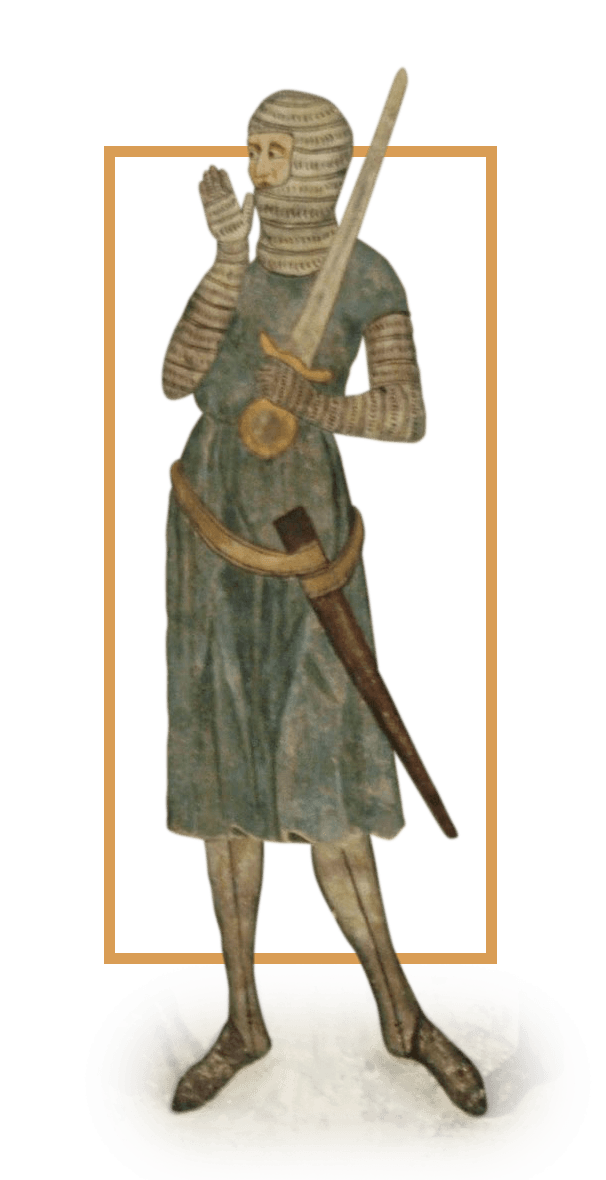SAN MIGUEL DE ARALAR
roads hub
Today, a number of factors promote the reopening of the Old Way of St James, known as the Way of Sakana, of the Calzada, Via Aquitaine or the Forgotten Way. Current pilgrims have new infrastructures such as cycling paths, among which we highlight the connection brought by the EuroVèlo 1 and 3. Thus a new period begins based on a calmer mobility, perfect to foster a true religious and spiritual experience.
The long period of peace of the Roman Empire in Vascon territory ended abruptly with the bagaudae uprisings, which brought the destruction of Aracaeli by general Merobaudes in the year 443. The revolt worsened in the year 449.
St Paulinus of Nola narrates these events and highlights the faith of the Christians who inhabited the area around the Pyrenees. Merovingian Catholics and Vascons resisted the Visigoths for centuries. In the year 589, the conversion of Recaredo meant that starting from the II Council of Toledo the bishops of Pamplona would be recorded in the conciliar lists.
The protector of Christian faith, Archangel St Michael, appeared in several locations across Europe between the 5th and 10th centuries. As a sign of devotion to the Archangel, defender of the faith and captain of the celestial armies, sanctuaries and churches began to be built in his honour. They were located strategically, as can be seen on the map.
Vascon territory has its reference point in the city of Pamplona-Iruñea. The scope of this episcopal city extends from Leyre in the east to Aralar in the west. The people maintained this sanctuary and rebuilt its temple after several devastations by Muslim incursions. The many divine favours and miracles granted by St Michael led to the creation of his brotherhood, which between the 10th and 13th centuries had up to 40,000 members.
Within this framework, San Miguel de Aralar became a hub of paths where several pilgrimage routes converged. Paths such as St James’s way, Ignatius’ Way or the Way of the True Cross run through the Aralar mountain range and its surrounding valleys. Worth noting is what is known as the sword of St Michael, which aligns sanctuaries from Israel to Ireland, following the sun’s path on the day of the summer equinox.
Network of locations and paths of Saint Michael
After the fall of the Roman Empire, the emerging Christian community experienced the aid of Archangel St Michael through appearances in which the angel defender of the Church helped the faithful in their fight for survival. In the Book of Revelation, St Michael is presented fighting against and defeating the dragon, a symbol of the devil or Satan (Revelation 12.7), and directing the heavenly liturgy (Revelation 8:3-4).
These appearances of the Archangel took place in rugged, high places, chasms or caves. The cult of St Michael has been one of those with the most followers throughout Christianity: from his origin and fervent acceptance in eastern Judaeo-Christian tradition, it established deep roots in the West, in particular around the hub formed by the sanctuaries of San Michele Arcangelo, (5th century), Mont-Saint-Michel and Aralar (8th century).
The Way of St James
San Miguel de Aralar is a Michaelian reference for the Way of St James, also called the Jacobean Route. In the Middle Ages this was already a busy path, when mediaeval pilgrims wished to visit Finis Terrae, the tomb of the Apostle James, before dying. Along this path of conversion, they visited places that held relics as valuable or even more so than the remains of St James, the son of Zebedee.
Through the valley to the south of the Sanctuary of Aralar, called Sakana, ran the military Road XXXIV ab Asturica Burdigalam (Astorga – Bordeaux), which strongly linked the fate of the Vascones to the Gallic world. Along this old Roman road, the locals received the support of the Merovingians against the Visigoths. Until the French Way was opened in the 11th century, this was the only path to access Santiago de Compostela. Travellers and pilgrims had the mansio Aracaeli to rest in, the location later known as the monastery of Zamartze, in Uharte Arakil.
